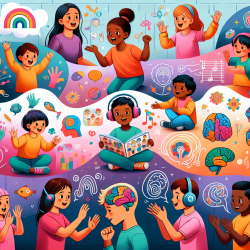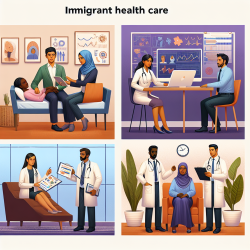The Paediatric Autism Communication Therapy-Generalised (PACT-G) study provides valuable insights into enhancing autism therapy by generalizing acquired skills across different contexts. As a speech-language pathologist, leveraging these findings can significantly improve outcomes for children with autism spectrum disorder (ASD). This blog will outline the key takeaways from the PACT-G study and suggest practical applications for practitioners.
Understanding the PACT-G Study
The PACT-G study builds on the original Pre-school Autism Communication Therapy (PACT) model by incorporating strategies to promote the generalization of therapy-acquired skills into naturalistic home and school settings. The study involved 244 children aged 2-11 years, who were randomly assigned to either the PACT-G intervention plus treatment as usual (TAU) or TAU alone. The primary outcome measured was autism symptom severity, with secondary outcomes including language and functional adaptation in home and school contexts.
Key Findings
- Improved Autism Symptoms: The PACT-G intervention showed a significant reduction in autism symptom severity compared to TAU alone. This was assessed using the Autism Diagnostic Observation Schedule (ADOS-2).
- Enhanced Generalization: The study demonstrated that incorporating parent- and education staff-mediated strategies facilitated the generalization of acquired skills across different contexts, leading to broader functional improvements.
- Parental and Educational Staff Involvement: Training parents and educational staff to use specific communication strategies was crucial in achieving these outcomes. The intervention's success hinged on consistent application of these strategies across home and school settings.
Practical Applications for Practitioners
To apply the findings from the PACT-G study, consider the following strategies:
- Integrate Therapy into Naturalistic Settings: Encourage parents and educational staff to practice therapy techniques within daily routines and play activities. This helps children apply their skills in real-world contexts.
- Consistent Communication Strategies: Train both parents and teachers in the same communication strategies to ensure consistency. This includes techniques like commenting on the child's activity, using anticipation, and encouraging communication initiations.
- Collaborative Approach: Facilitate regular meetings between parents and educational staff to discuss progress, share experiences, and plan strategies. This collaboration is key to maintaining consistency and reinforcing skills across settings.
- Video Feedback: Use video feedback to coach parents and teachers. Reviewing video recordings of interactions can help identify effective strategies and areas for improvement.
Encouraging Further Research
The PACT-G study underscores the importance of research in developing effective autism interventions. Practitioners are encouraged to stay informed about the latest research findings and consider participating in or conducting studies to contribute to the growing body of knowledge in this field.
To read the original research paper, please follow this link: Paediatric Autism Communication Therapy-Generalised (PACT-G) against treatment as usual for reducing symptom severity in young children with autism spectrum disorder: study protocol for a randomised controlled trial.










